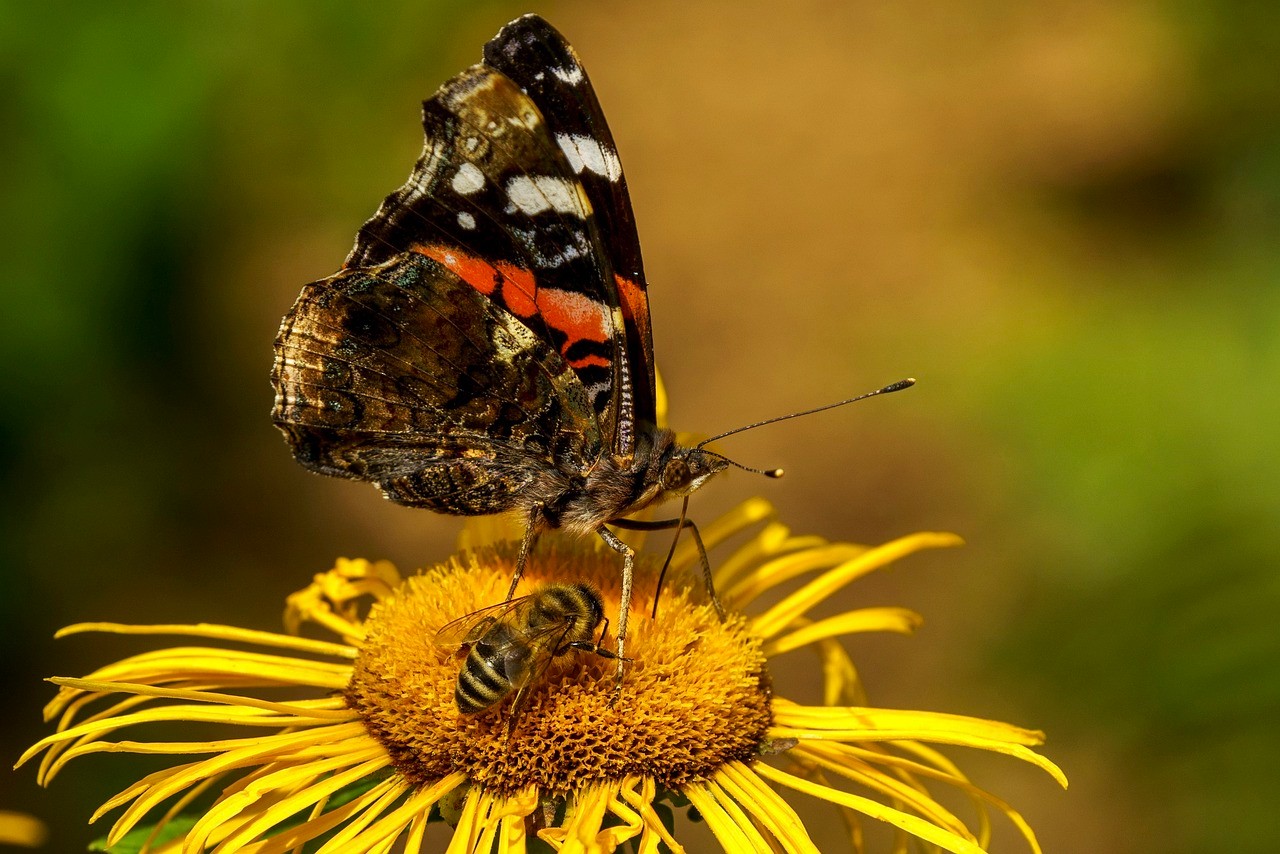Deciding to turn your outdoor space into a haven for bees and butterflies is an excellent way to help struggling pollinators and beautify your garden. Over the last several years, gardeners have reported noticeably less buzzing around their gardens. As many essential pollinators face decline, gardeners are taking up arms and doing their part to provide safe havens for bees and butterflies. Although one person can’t flip the script on climate change and save agriculture, gardeners have an opportunity to create pollinator-friendly pit stops for bees and butterflies to find food, water, and mates.
Don’t Overwork Your Garden
Although perfect aesthetics may make a great social media post, nature enjoys nature. Obsessing over perfectly placed flower beds and lawns without a single weed does not leave much room for pollinators and other wildlife to use as a resource. Gardens naturally become a habitat for pollinators, like bees, so allowing some things to happen in your garden organically can elevate its usefulness. Allowing your garden space to become a haven for food, shelter, and nutrition while keeping it looking gorgeous is totally feasible! So, try not to overwork (or overthink) your garden’s perfect look, and let it go! Bees love clover and wildflowers, so if you leave some wild spaces, the bees and butterflies will thank you!
Keep it Local
When people suggest planting native plants to attract pollinators, it is because local plants more closely match their needs. Plant nurseries may breed out scents and, in some cases, pollen and nectar as well. Looking into your region’s climate and soil helps determine which plants will be best for your garden. Xerces Society has a great native plant finder that is free. Diversify your garden by planting blooms of all shapes and sizes. Clump blooms make it easy for bees and butterflies to find your garden, so include some among your individual flower and plant selections. Another way to keep it local is to support local beekeepers by purchasing local honey and other bee products.
Skip Pesticides
It is surprising how many gardeners plant their own food to ensure they do not ingest toxic pesticides but end up using them in their own gardens to keep pests away. Pesticide use is arguably the number one reason pollinators are declining in numbers. Neonic pesticides affect the entire plant, making the nectar and pollen toxic to pollinators. It is critical to thoughtfully choose pest control that will not be poisonous to you, your plants, or pollinators. A huge thing that gardeners can do when wanting to attract bees and butterflies is to encourage others, especially neighbors, to skip using pesticides. Collectively, bringing attention to the dangers of pesticide use will ultimately benefit local pollinators.
Monarchs Need Milkweed
Monarch butterfly numbers are rapidly declining due mainly to genetically engineered crops. Milkweed is used less and less in agricultural crops, and milkweed is the monarch’s only food source and where monarchs lay their eggs. Intentionally planting milkweed is an excellent way to attract monarchs and can be done using cuttings or seeds. Those gardeners who choose to make milkweed part of their garden will be doing a world of good for the butterflies and creating an incredible scent when in full bloom!
Safe Water Spots
Bees and butterflies need water and will seek our resources, so having one or more as part of your garden landscape is an excellent way to encourage them to come around frequently. Especially in dry climates, where there isn’t much dew on the grass in the morning, having safe water spots for bees is something every gardener should think about adding. Bird baths are a popular choice when space allows it, but a shallow dish with water and some pebbles is a great alternative. Since bees do not know how to swim, ensuring they have a safe place to perch is easy and very helpful! It is suggested to change the water frequently enough that it doesn’t become a haven for mosquitoes, but it is ok to have some dirt and sticks in the water for bees. Again, this choice may vary depending on your climate and where you live.

Get help with your beehive or bee swarm removal! Call Today 760-224-3040 Or 951-265-8292!
Gardeners Thoughtfully Creating Gardens to Attract Bees and Butterflies
Regardless of where you live, if you have the opportunity to customize your garden this year, follow these five suggestions to attract bees and butterflies. Although some of these suggestions require letting go of the "perfectly" manicured landscape, the charm and environmental benefits can make anyone feel good about their choices. Because the use of pesticides is a serious threat to pollinators, if you have a concern with a beehive near your home or garden, contact a local bee removal company that uses humane techniques to remove and relocate live bees. D-Tek Bee Removal is dedicated to providing people with the best humane, live bee removal service.
